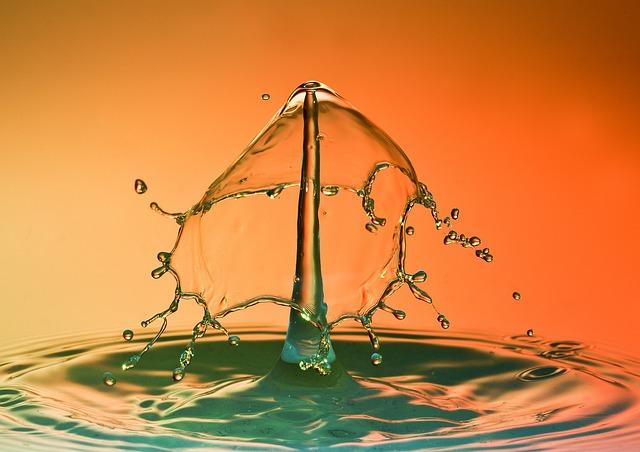In the world of cinema, where stories unfold in a dance of light and shadow, the magic often lies in the unseen artistry of seamless transitions. As audiences, we glide from scene to scene, unaware of the intricate choreography that guides our journey. Behind this illusion, filmmakers wield advanced editing tools with the precision of a maestro conducting a symphony. This article delves into the innovative techniques and technologies that transform raw footage into fluid narratives, revealing the hidden craft that keeps us spellbound in our seats.
Crafting Illusions: The Art of Invisible Cuts
Filmmakers masterfully weave the fabric of storytelling through the use of invisible cuts, creating transitions that appear effortless. These cuts, often hidden within the movement of a camera or the natural flow of a scene, allow the narrative to unfold without jarring interruptions. By employing advanced editing tools, editors can blend shots seamlessly, ensuring the audience remains immersed in the story.
- Match Cuts: Aligning two similar frames to create a smooth transition.
- Whip Pans: Rapid camera movement to blur the transition between scenes.
- Sound Bridges: Using audio to link scenes, maintaining continuity.
- L-Cuts and J-Cuts: Overlapping audio and visual elements to ease transitions.
With the aid of modern software, such as Adobe Premiere Pro and Final Cut Pro, editors can meticulously adjust frame by frame, crafting a flow that feels both natural and intentional. These tools offer a palette of options, from blending modes to dynamic keyframing, allowing for a fluidity that transcends traditional editing boundaries.

Digital Wizardry: Tools That Transform Transitions
In the realm of filmmaking, transitions are the invisible threads weaving scenes into a cohesive narrative. Modern filmmakers harness the power of advanced editing tools to craft these transitions with almost magical precision. From Adobe After Effects to Final Cut Pro, these platforms offer a suite of features that can transform a simple cut into a mesmerizing visual journey. With tools like motion tracking, editors can seamlessly blend scenes, ensuring continuity and fluidity. The introduction of AI-driven editing has further revolutionized this process, enabling automated scene detection and smart transitions that adapt to the story’s rhythm.
- Layering Techniques: Craft complex transitions by stacking multiple video layers, allowing for dynamic effects like fades and overlays.
- Masking and Keyframing: Create intricate transitions using precise control over elements, blending them smoothly from one scene to another.
- Color Grading: Ensure visual consistency across transitions, maintaining the film’s tone and mood seamlessly.
These tools not only enhance the visual appeal but also empower storytellers to push the boundaries of creativity, making transitions an integral part of the narrative tapestry.

Mastering Flow: Techniques for Fluid Scene Changes
In the world of filmmaking, achieving a natural flow between scenes is an art form. Editors often employ a variety of techniques to ensure these transitions are smooth and engaging. Cross-dissolves are a classic method, subtly blending one image into another, creating a seamless visual connection. Match cuts are another powerful tool, aligning elements of two different scenes to give the impression of continuity, whether through action, shape, or theme.
- Sound bridges – Using audio to overlap scenes, guiding the audience’s emotions and expectations.
- Invisible cuts – Cleverly hiding transitions within the movement of the camera or the action, maintaining the illusion of a single continuous take.
- Graphic matches – Aligning visual elements to create a logical and aesthetic transition.
By mastering these techniques, filmmakers can craft a viewing experience that feels both dynamic and coherent, guiding the audience seamlessly from one moment to the next.

From Rough Cut to Refined: Expert Tips for Seamless Edits
Transforming raw footage into a captivating narrative requires not just skill but the right set of tools. Advanced editing software offers filmmakers a myriad of options to enhance their storytelling capabilities. By utilizing features such as multi-cam editing, dynamic transitions, and color grading, editors can seamlessly weave together disparate scenes. The key lies in understanding the nuances of each tool to maintain a fluid visual flow.
- Layering Techniques: Use layers to add depth and dimension, allowing for more complex edits.
- Keyframe Animation: Smoothly transition between scenes by adjusting keyframes for motion and effects.
- Audio Syncing: Perfectly align audio with video to ensure continuity and enhance viewer immersion.
Incorporating these techniques, filmmakers can craft transitions that are not only seamless but also emotionally resonant, guiding the audience effortlessly through the story. Mastery of these advanced tools opens up a world of creative possibilities, making the editing process both an art and a science.

